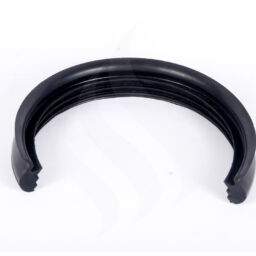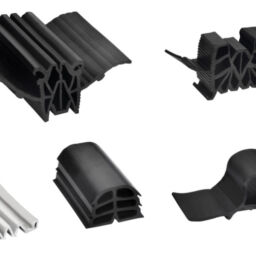
This article covers the importance of EPDM Expansion Joint profiles, their benefits:
The roads and bridges that connect our cities are continually pressed by traffic and varying climatic conditions, how do they stand it?
These integrated facts of our transportation system undergo considerable stress from several sources, including dynamic loads, temperatures, and structures. Among these are the expansion joint profiles to facilitate the extension and contraction of the structure as well as to enable the efficient running of the structure for a longer span. This article covers the importance of EPDM joint profiles, their benefits, and their use to ensure the ultimate level of safety and performance in road and bridge infrastructure. As we continue, let us learn how these profiles participate in the construction and maintenance of infrastructure, as well as how they guarantee the stability and longevity of our transport roads.
Benefits of EPDM Expansion Joint Profiles:
- Flexibility and Durability: The EPDM expansion joint profiles are the most critical in terms of their day-to-day duty of accommodating movement in infrastructure such as roads and bridges. The secret to their success lies in their ability to stretch and hold strains with great ease and tenacity. EPDM joints have the potential to withstand various loads and stresses, including traffic bumps, temperature variations that cause structural expansion and contraction, and seismic activity.
- Weather Resistance: These EPDM seals are made from materials that shield them from extreme sunlight. They ensure that pollutants such as wind or dust cannot affect the durability of these seals due to their toughness against these factors. Furthermore, their durability makes them cost-effective because they do not require frequent replacements as a result of damage caused by harsh environmental conditions. In addition, by reducing maintenance costs, this would enable you to get back more than what was put in initially. Consequently, for superior weatherproofing solutions, EPDM seals represent an ideal choice because they are able to combine all these features within a single product line.
- Seismic Resilience: EPDM profiles perform an excellent job of absorbing energy when the ground shakes during earthquakes. They also assist minimize load on critical bridge elements like decks as well as the foundations. It has a great role in avoiding conditions that may lead to the failure of structures and supports the infrastructure by minimizing the impact of these external forces. This not only keeps highways and bridges longer-lasting but also ensures that everybody stays safe.
- Waterproofing and Sealing: EPDM profiles serve as a waterproof seal, they are crucial in preventing damage over time for roads and bridges. When it comes to water, these constructions are a disaster since the water begins to seep through the gaps and cause damage. It emerged that EPDM profiles effectively seal these open points, which include pavement sections, bridge decks, and expansion joints. This creates a crucial barrier that significantly reduces the chances of contact with water, which could otherwise result in problems with rust, weakening of structures, or degradation.
- Low Maintenance Requirements: EPDM expansion joints are a game changer for a maintenance staff. They were able endure traffic, collision, and weather since they are resilient, while also sealing due to their flexibility. A smaller amount of time is spent on inspection and repair, resulting in significant long-term cost savings. They are not entirely self-sufficient, but this is all they require in terms of maintenance, whereas other solutions require regular checks.
Applications of EPDM Expansion Joint Profiles in Roads and Bridges:

- Bridge Expansion Joints: EPDM expansion joint profiles are flexible connectors that can expand or shrink based on temperature changes. This ensures that the bridge functions without experiencing damage. EPDM profiles guard against stress cracks and preserving good condition of the bridge over a long period of time.
- Highway Pavement Joints: EPDM joints help keep asphalt and concrete roads in tip-top shape by adjusting their movements. They also create waterproof barriers to stop water from causing cracks and potholes. That way, you get a smoother driving experience.
- Airport Runway Joints: Such expansion gaps are under immense pressure from the running cycle of operations such as aircraft takeoff, landing, and taxiing. In such a situation, EPDM is the savior. The first of its characteristics is the incredibly high tensile strength that provides for a good seal against pressures, and the second is the flexibility that allows for some shrinkage without cracking, making the closure not inelastic and very resistant. It is owed to guarantee its running and effective surface for each aircraft, as well as for the cargo and passengers it bears.
- Railway Bridge Joints: EPDM profiles have flexible textures that adapt to movement and are able to resist the forces generated by trains passing over bridges. To avoid excessive stress, they lower the systematic loads on the tracks and trains. These profiles provide the ability to adapt the forces in the railway system and boost its durability.
- Tunnel Expansion Joints: These joints seal important intersections in tunnels to maintain structural integrity. They allow materials to expand and contract freely in response to temperature changes and other dynamic forces. This improves transportation reliability and reduces breakdowns and maintenance needs.
Over the years, there has been advancement in transportation and therefore improvements in its structures, and thus the need for an expansion joint profile with superior performance is even more important. EPDM expansion joint profiles play an important role in the road and transportation systems, as well as bridge and tunnel maintenance. They serve an essential function in the safety and effectiveness of transportation systems.
Read 5 Facts about EPDM







